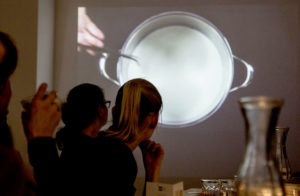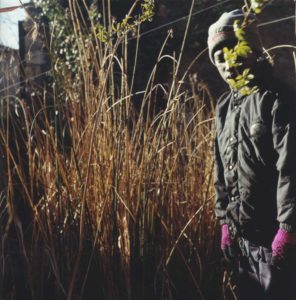The Magic of Portrait Photography (Part Two)
My portraits of women are a cornerstone of what I do. In that work, I am often hired to do a single portrait, which then expands into a pair or group portrait – this is down to the natural, evolving need to subsequently show that same person in connection with their products or within their team.
While in a single portrait session there is an intimate space between the person I am photographing and my camera, especially in terms of what she wants to represent professionally, as soon as there are two or more subjects, their shared relationship comes into play.
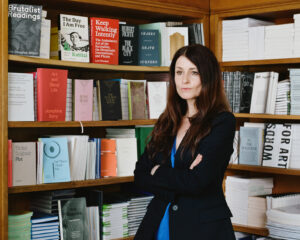
Channeling my empowering photography ethos, my aim was to show Caroline Schneider, founder of Sternberg Press, as the true art and discourse-related thinker, as well as leader that she is.
When I took this solo portrait for Sternberg – a publishing house for artistic and cultural criticism, creative non-fiction, and literary and experimental fiction founded by Caroline in New York in 1999 – it gave way to a team shoot where I captured an even fuller picture of their work environment and the dynamics exist between them. It is in their creative home on Karl-Marx-Allee, amidst their books, that I took this series.
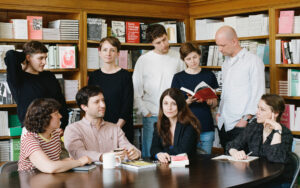
I wanted to illustrate how Caroline has a very strong relationship to each and every single title published by the press, plus with the vital, dynamic team she has carefully built over the years in this truly unique place. Her beauty shines.
Indeed, once you start representing a person in a professional context, there is always that wider spectrum or bigger picture which wants to be shown to the world. And, ideally, all of these photographs should be taken by the same person, so that they can create a cohesive vision – one which aesthetically becomes one body. That’s where I come in!
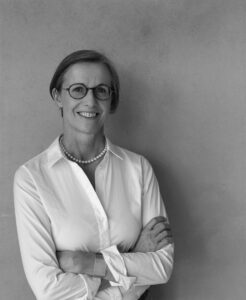 In this vein, I’ve also photographed Eva Meyer-Hermann: a curator and art historian who decided to become a curator for artists, as her way of responding to the political developments in the art world which have led to its general lack of real exchange and mediation.
In this vein, I’ve also photographed Eva Meyer-Hermann: a curator and art historian who decided to become a curator for artists, as her way of responding to the political developments in the art world which have led to its general lack of real exchange and mediation.
And it was precisely at this special moment of building her new identity – and website – that I came into the picture, with my personal branding photography, with the aim of communicating both Eva herself and her practice to a wider audience.
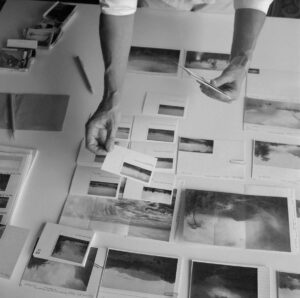
We spent a couple of hours together in her office – first alone, then with her associate curator, Johannes Schmidt. Every photograph I took for Eva had a different role to play. In the headshot, the aim was to show her as open and smiling, offering an invitation for dialogue.
The other two images show moments of contemplation and creative thinking, as well as her explaining a work of art that is dear to her.
Similarly, I have enjoyed the privilege of capturing Laura Galatti’s portrait. Laura is a Swiss pianist, composer, and politician. After having encountered her and her partner, Christina Thürmer-Rohr, performing Die Kontroverse in the Viennese Liszt-Saal, I had the honour of joining them during rehearsal in their performance space, Akazie 3, here in Berlin Schöneberg.
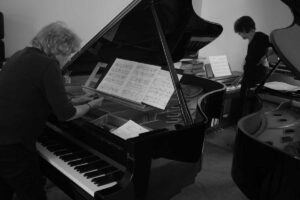 My role in facilitating empowering photography here was centred on conveying Laura’s artistry and skill. This type of work presents me with the wonderful challenge of somehow finding a meaningful way to convert aural beauty into a visual medium.
My role in facilitating empowering photography here was centred on conveying Laura’s artistry and skill. This type of work presents me with the wonderful challenge of somehow finding a meaningful way to convert aural beauty into a visual medium.
So in my single portraits of Laura, the viewer is able to experience Laura listening to the sound she is producing with a metal sheet. And in her partnered shots, I have sought to communicate her close relationships and dialogues with her instrument, her partner, and the very process of writing music.
Ultimately, it’s all an organic process. During the portrait session, the women I’m photographing talk with me and show me what they are selling or creating or offering. Then, I capture these aspects too.
In fact, in so much of my art photography work to date, I have searched for ways to capture invisible processes within a photographic image, something of an essence that would otherwise be hidden: from plants and fruits, to animals, and nonverbal communication between people.
In this way, I am very versatile in what and how I can photograph, so website photography – as this broad, rich spectrum – just comes naturally to me.
The Magic of Portrait Photography (Part Two) Read More »
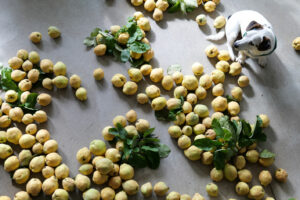 I adore
I adore 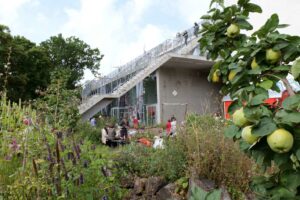 Lobe is a house project in Wedding: a newly built, brutalist concrete building defined by its terraces, its garden – where, among other things, quinces grow – and its many cohabiting animals. Soon, its ground floor units will become one space, a fresh, joint space for events, workshops, food experiments, and a lab for creating a more sustainable future.
Lobe is a house project in Wedding: a newly built, brutalist concrete building defined by its terraces, its garden – where, among other things, quinces grow – and its many cohabiting animals. Soon, its ground floor units will become one space, a fresh, joint space for events, workshops, food experiments, and a lab for creating a more sustainable future.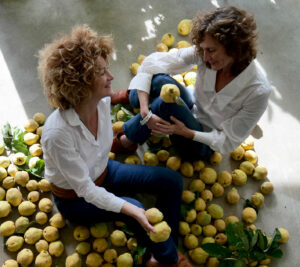 Not least a dream commission for me as
Not least a dream commission for me as 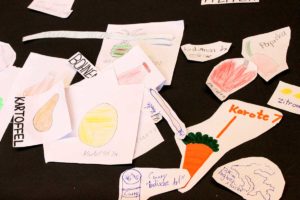 I asked parents to send their child to school with a cutting board and one ‘leftover’ food item from the fridge. In a sense, it was going to be an experiment about how we can change our relationship to food. And what better group than kids with little or no experience with cooking!
I asked parents to send their child to school with a cutting board and one ‘leftover’ food item from the fridge. In a sense, it was going to be an experiment about how we can change our relationship to food. And what better group than kids with little or no experience with cooking!

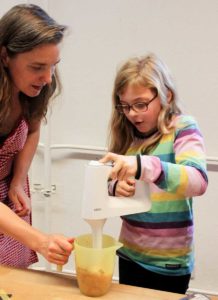
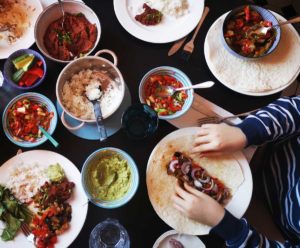
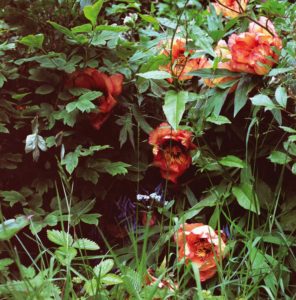 Spring is in full bloom!
Spring is in full bloom! 